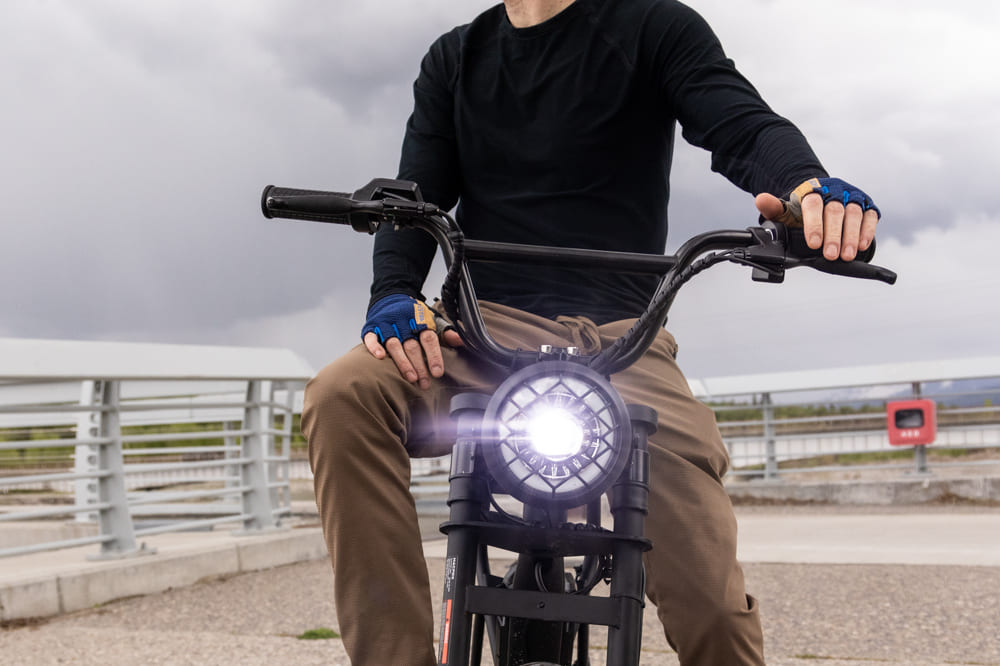The discourse enveloping electric bicycles (eBikes) and their classification within the realm of motorized conveyances transcends mere technical jargon. It’s a pivotal inquiry with profound implications for our conceptualization, regulation, and assimilation of these avant-garde contraptions into our quotidian existences and the expansive transportation tapestries. This debate transcends mere linguistic nuance; it is instrumental in sculpting the future contours of urban locomotion, ecological stewardship, and individual transit emancipation.
Unpacking the eBike
Pondering whether an eBike nestles in the category of a motorized conveyance necessitates an initial crystalline comprehension of its essence. Fundamentally, an eBike is a conventional bicycle, invigorated with an electric motor. This motor doesn't supplant human exertion but rather augments it, furnishing valuable aid in scenarios such as ascending gradients or initiating movement from a stationary position.

The Interplay of Human Effort and Electric Power
The amalgamation of the electric motor within eBikes is a salient facet of their utility. This motor generally amplifies, rather than replaces, the cyclist's pedaling vigor. The mode of motor activation diverges, primarily manifesting in two variants:
Pedal-Assist Mechanisms: Herein, the motor delivers power solely during active pedaling. This engenders a mutualistic rapport between the cyclist and the contrivance, wherein the assistance level can typically be modulated to suit the cyclist’s requisites.
Throttle-Control Mechanisms: In this configuration, the motor is actuated via a throttle, enabling the eBike's propulsion independently of pedaling. This modality nudges eBikes towards a kinship with motorized scooters or motorcycles.
Battery Technology: The Heart of the eBike
The prowess of an eBike largely hinges on its battery’s aptitude. This capacity not only sets the eBike’s journey range per charge but also influences attributes such as the bicycle’s mass, its proficiency over varying landscapes, and the requisite maintenance level. As battery technology evolves, we observe significant amplifications in eBike range and efficiency, broadening their operational horizons.
Navigating the Legal Landscape: eBikes in the Eyes of the Law
The categorization of eBikes oscillates considerably across different legal frameworks. This disparity stems from legislative interpretations of what constitutes a motorized vehicle. Typical criteria in this assessment encompass the motor's power yield, the eBike's maximal velocity, and the mechanism of motor engagement.
Diverse Regulations and Their Implications
Subject to local statutes, eBikes often receive treatment akin to traditional bicycles, albeit with certain limitations. For instance, there may be stipulations on the maximal speed for motor assistance or thresholds on motor power. Transgressing these parameters could reclassify an eBike as a motorized vehicle, invoking an alternate regulatory schema, such as requisites for licensure, registration, and compliance with more stringent traffic statutes.
Safety Standards: A Crucial Consideration
With the fluid classification of eBikes, safety protocols ascend to paramount importance. This encompasses the design and fabrication of eBikes as well as the conduct and obligations of the cyclists. For instance, in certain locales, eBike operators are mandated to don helmets, adhere to age limitations, and observe specific traffic regulations, all in the pursuit of safeguarding both the riders and their fellow citizens.
eBikes: Pioneers of Modern Urban Mobility
eBikes are redefining urban transit, presenting an eco-efficient, adaptable transport modality increasingly viewed as a panacea for challenges such as vehicular congestion, pollution, and urban sprawl.
Reducing Environmental Footprint: A Sustainable Choice
eBikes' environmental benignity ranks among their most compelling attributes. In contrast to traditional motorized vehicles, eBikes generate markedly lower pollutant levels. Their electric motors are more efficient and emit no direct pollution. By diminishing contributions to air contamination and urban acoustic pollution, eBikes offer a more sustainable choice for metropolitan commutes and leisure travels alike.
The Urban Commute Reimagined: Efficiency and Accessibility
For city commuters, eBikes epitomize an idyllic fusion of convenience, physical activity, and ecological awareness. They provide a more expeditious transit mode compared to conventional bicycles, especially across extended distances or undulating terrains, sans the drawbacks of excessive physical toil or the necessity for comprehensive refreshment facilities at one's workplace. This usability, coupled with the burgeoning availability of bicycle lanes and eBike-accommodating infrastructures in urban centers, is elevating eBikes as a preferred option among a diverse urban populace.
Related Reading: Choosing the Right E-Bike for Your Daily Route
The Forward March of Technology: eBikes Evolving
The technological strides in eBikes are not confined to batteries and motors. We are witnessing a broader trend where eBikes are becoming more intertwined, interconnected, and intelligent.
Battery and Motor Developments: Pushing the Boundaries
The future trajectory of eBikes is indissolubly linked with advancements in battery and motor technologies. Progress in these domains is escalating the range, diminishing the weight, and curbing the overall expense of eBikes. Such advancements are vital in rendering eBikes more attainable and practical for a wider audience.
Smart Integration: eBikes in the Digital Age
The infusion of digital innovations into eBikes marks another frontier. Contemporary eBikes frequently boast features like GPS navigation, fitness monitoring, and smartphone integration. These functionalities not only enrich the riding experience but also incorporate eBikes into the broader smart transportation ecosystem.
Cost Considerations: eBike Affordability and Economic Impact
Notwithstanding their manifold advantages, eBikes carry a price tag that could pose a hindrance to some. The cost of an eBike encompasses not only the initial acquisition but also ongoing expenditures such as maintenance, battery substitution, and potential regulatory expenses in areas where eBikes are deemed motorized vehicles.
Evaluating the Financial Outlay
When evaluating an eBike’s expense, it's essential to contemplate both the initial outlay and the enduring fiscal implications. Albeit the primary purchase might exceed that of a standard bicycle, eBikes potentially offer economies in diminished public transport fares, reduced fuel costs (as opposed to automobiles or motorcycles), and potential health benefits.
Government Interventions: Subsidies and Incentives
Some administrations, acknowledging the virtues of eBikes, are proffering various inducements to foster their uptake. These can encompass fiscal subventions, tax concessions, and investments in eBike-friendly infrastructures. Such initiatives not only render eBikes more accessible to the populace but also support broader objectives of sustainable urban evolution and minimized transportation emissions.
Safety in Focus: Ensuring a Secure eBike Experience
Whilst eBikes present innumerable advantages, safety remains a critical concern. This includes the bodily well-being of the cyclist and the public, as well as the safeguarding of the eBike itself against theft or damage.
Essential Safety Gear and Practices
Safety precautions span a spectrum from wearing appropriate gear (like helmets and high-visibility clothing) to understanding and adhering to traffic laws. In certain jurisdictions, additional safety requirements might be imposed on eBike riders, reflecting their unique operational characteristics.
Theft Prevention: Securing the Investment
Theft prevention is also a cardinal aspect of eBike ownership, given their value and appeal. Strategies for securing eBikes include robust locking systems, secure storage solutions, and, increasingly, electronic security features such as GPS tracking.

Conclusion
The discourse surrounding eBikes encapsulates broader themes of innovation, sustainability, and urban mobility. As these devices evolve and proliferate, they challenge our preconceived notions of transportation and compel us to reconsider the synergy between technology, environment, and societal norms. Whether embraced as a symbol of progressive transit or scrutinized for regulatory classification, eBikes undeniably hold a significant role in shaping our collective journey towards a more sustainable and accessible future.
FAQs
Q1: Do eBikes require a license to operate?
The need for a license for eBikes varies depending on local regulations. In many places, if the eBike meets certain criteria like maximum speed and power output, no license is required. However, if it exceeds these limits, it may be classified as a motorized vehicle, necessitating a license.
Q2: How far can eBikes travel on a single charge?
The range of an eBike depends on factors like battery capacity, terrain, rider weight, and level of motor assistance used. Generally, eBikes can travel between 25 to 70 miles (40 to 112 kilometers) on a single charge.
Q3: Are eBikes environmentally friendly?
Yes, eBikes are more environmentally friendly compared to traditional motorized vehicles. They produce no direct emissions, have a lower carbon footprint, and their electric motors are highly efficient. However, the environmental impact of producing and disposing of batteries is a factor to consider.


















